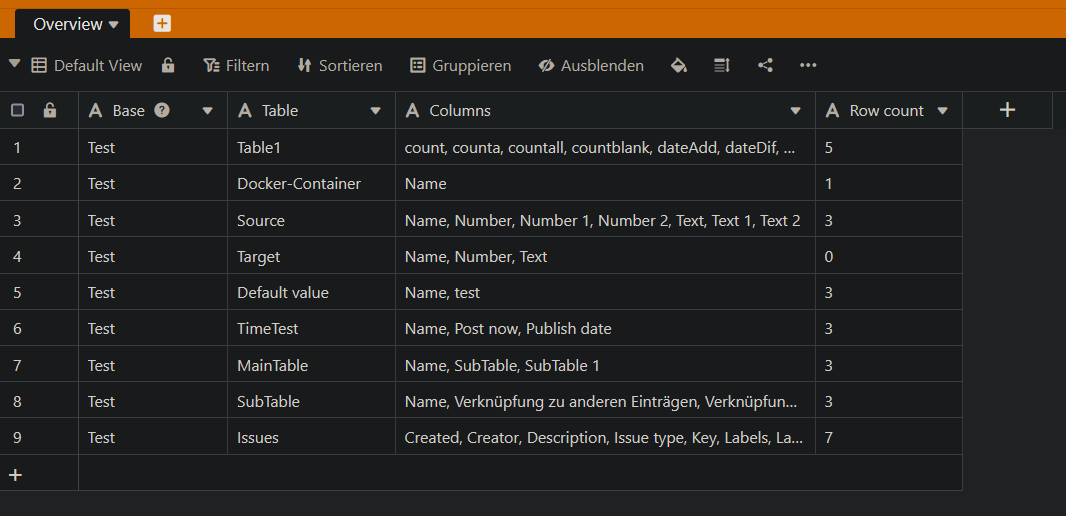hey everyone, is there a way using java-script to get a complete structure off all bases (name / columns / rows etc.)? I would like to get this all in a new base. Thanks
Hi @freezle.
This is quite few information to be honest.
One option would be to simply duplicate a base for example.
Could you be more specific?
What should happen with existing data?
Are you looking for a synchronizing mechanism?
Greetings
AkDk7
Hey @AkDk7 thanks for the quick reply.
I run seatbale on my own test server and have 24 different bases in 3 groups.
I would like to have 1 base with all the informations of the existing bases on my server. I would like to have a sort of overview. It should include base name , columns and rows (numbers).
Was thinking about something like this. https://forum2.seatable.io/t/tutorial-get-a-complete-folder-structure-from-a-seafile-server-with-a-python-script/1654
Hope this makes sense.
Thanks
Hi @freezle.
I think you can’t get over this kind of limitation of the javascript implementation. Javascript in SeaTable, as far as I figured out, is bound to the base in which you execute it.
It would be much easier to write a python script since you can connect to any base by the url of the instance and a per base api key. Then you can fetch all tables and related columns of the bases. Finally you can insert this data in your overwatch base ![]() For this you have to extend your installation with FAAS and a runner for python.
For this you have to extend your installation with FAAS and a runner for python.
Thank you so much! This would be absolutely perfect.
Here you go.
This is a very simple script. It will not empty the target table nor update any row. It only inserts!
from seatable_api import Base, context
##### variables
# Add as many bases as you want. But you have to create an api key for each base you want to read from!
bases = [
{
'url': 'https://???',
'baseName': '???',
'apiKey': '???',
},
{
'url': 'https://???',
'baseName': '???',
'apiKey': '???',
},
]
targetTableName = 'Overview'
# If you don't run this script from SeaTable change ??? to the target SeaTable url and api key
targetUrl = '???'
targetApiKey = '???'
#####
# you don't need to change anything below this line
targetServerUrl = context.server_url or targetUrl
targetServerToken = context.api_token or targetApiKey
targetBase = Base(targetServerToken, targetServerUrl)
targetBase.auth()
batchRows = []
# run through all bases
for base in bases:
baseName = base['baseName']
tmpUrl = base['url']
tmpToken = base['apiKey']
# connect to the source base
sourceBase = Base(tmpToken, tmpUrl)
sourceBase.auth()
# get all table information
metaData = sourceBase.get_metadata()
for table in metaData['tables']:
tableName = table['name']
# all columns
columns = [column['name'] for column in table['columns']]
columns.sort(key = lambda x: x.lower())
columnText = ', '.join(columns)
# row count
rowCountResult = sourceBase.query(f'SELECT count(*) AS nbr FROM `{tableName}`')
rowCount = rowCountResult[0]['nbr']
row = {
'Base': baseName,
'Table': tableName,
'Columns': columnText,
'Row count': rowCount,
}
batchRows.append(row)
# insert into the target table
targetBase.batch_append_rows(targetTableName, rows_data=batchRows)
Thank you so much! I really appreciate your help!!
Awesome, you’re welcome!
This topic was automatically closed 2 days after the last reply. New replies are no longer allowed.

